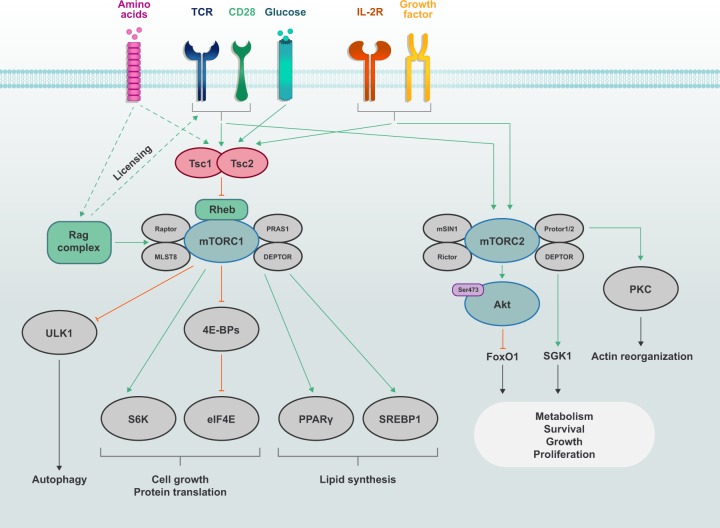Fig. 2. mTOR signaling in T cells.
The discrete mTOR complexes, mTORC1 (consists of mTOR, Raptor, PRAS1, DEPTOR and MLST8) and mTORC2 (consists of mTOR, Rictor, Protor1/2, mSIN1 and DEPTOR), are activated by immunological receptors (TCR, CD28 and IL-2R) and growth factors. mTORC1 activation is also sensitive to nutrients such as amino acids. Amino acids promote mTORC1 activation through the Rag complex, which also plays a permissive ‘licensing’ role to allow for TCR and CD28 co-stimulatory signals to induce mTORC1 activation. The Tsc complex, whose activity is suppressed by immune and growth factor signals, inhibits the activation of the small G protein Rheb, which promotes mTORC1 activation. mTORC1 induces cell growth and protein translation through S6K and eIF4E, as well as lipid synthesis through PPARγ and SREBP1. mTORC1 inhibits autophagy through ULK1 under nutrient-replete conditions. In contrast, mTORC2 is activated by growth factors and it mainly regulates survival and actin reorganization via Akt, SGK1 and PKC. mTORC2 also plays critical roles in context- or subset-specific metabolic reprogramming for cell growth, proliferation and survival.

